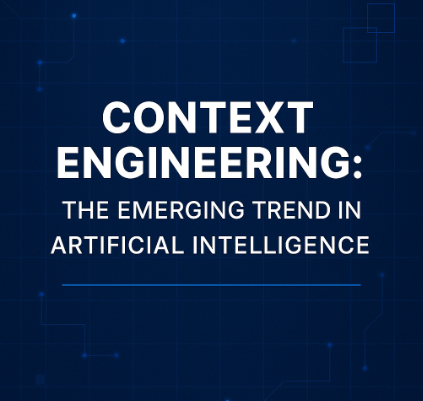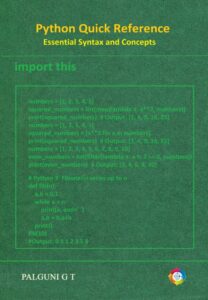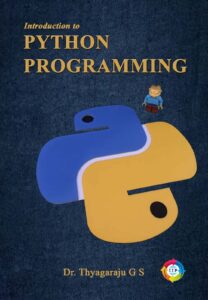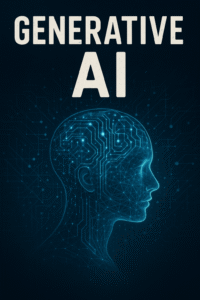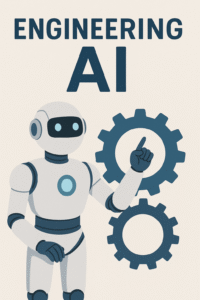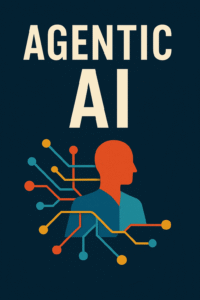By Dr. Thyagaraju G S
1. Introduction: The Shift from Prompts to Context
Artificial Intelligence has grown rapidly over the past few years, especially with the rise of large language models (LLMs) like ChatGPT. Initially, the focus was on writing better prompts to get smarter answers — a technique called prompt engineering. But as applications became more complex, we realized that prompts alone are not enough.
Today, a new and more powerful approach is taking over: Context Engineering. It involves building the right environment — the right information, structure, memory, and background — so the AI can perform tasks correctly and effectively.
As highlighted in Analytics India Magazine (2025), “Context engineering is 10x better than prompt engineering and 100x better than vibe coding” [1].
2. What is Context Engineering?
Context engineering is not about giving more information — it’s about giving the right information in the right format at the right time. It prepares the AI model to understand the full picture of what it’s supposed to do.
According to Andrej Karpathy, quoted in the same article, prompt engineering is like writing a sentence, but context engineering is like writing an entire screenplay for the AI [1]. This includes:
- Prior conversations or history
- Relevant documents or knowledge
- Clear instructions and structure
- User preferences or past behaviors
In my own research on Context-Aware Computing, this aligns with the core principle: the system must adapt based on situation, time, user, and environment.
3. Why Context Matters in Modern AI
AI models, especially LLMs, don’t think or reason like humans. They predict the next word or action based on the inputs given. If the context is poor or confusing, the output will also be poor.
As Analytics India Magazine rightly points out: “When LLMs fail, it’s not because the model is broken — it’s because the system around it didn’t set it up for success” [1]. This observation is consistent with my earlier work in designing recommendation systems for mobile phones and televisions, where success depended entirely on how well we handled the context.
4. Real-Life Applications of Context Engineering
Here are some areas where context engineering is already making a big impact:
- Education: AI tutors personalize learning by remembering a student’s progress and gaps.
- Healthcare: Systems that assist doctors by considering patient history and lab reports.
- Agriculture: In my recent projects, identifying disease in Arecanut trees depends on weather, soil, and crop data — all part of context.
- Enterprise: AI assistants that understand company workflows, report formats, and tone of communication.
The article emphasizes this idea well: “It’s not just about crafting a useful LLM input — it’s about encoding how your company works” [1].
5. Tools for Context Engineering
To manage context effectively, developers are now using specialized tools and frameworks such as:
- LangChain and LangGraph – For building complex workflows and memory management.
- RAG (Retrieval-Augmented Generation) – To fetch documents on demand.
- Vector databases – To search and store similar contexts for reuse.
These tools support the belief, as Harrison Chase of LangChain shared, that “context engineering is central to any serious agent framework” [1].
6. From Vibe Coding to Engineering Discipline
In the early days, developers experimented with “vibe coding” — adjusting the wording of prompts until something worked. But this method lacks structure and reliability.
Tobi Lütke, CEO of Shopify, put it well: “Context engineering describes the core skill better — the art of providing all the context for the task to be plausibly solvable by the LLM” [1].
This keyword — plausibly — is critical. AI doesn’t truly understand or reason; it responds to the way we set up the task.
7. The Future: Context as Software Architecture
We’re entering a phase where context engineering is not just a new technique — it’s becoming the new architecture of AI systems. It connects everything: memory, history, task planning, verification, and output handling.
As stated in the article, calling all this a “ChatGPT wrapper” is completely wrong. Instead, it’s a new software paradigm [1]. It fits perfectly into my ongoing work on agentic and conscious AI systems, where designing meaningful context is essential for smart, adaptive behavior.
Conclusion: Context is Everything
From my years of research in Context-Aware Computing, I see context engineering as the natural next step in Artificial Intelligence. It brings together human-like understanding, system intelligence, and real-world application.
To summarize:
- Prompt engineering helped us get started.
- Vibe coding added creativity.
- But context engineering builds intelligence.
It’s not just a trend — it’s the future of how we’ll design, teach, and deploy AI systems across domains.
References
[1] Analytics India Magazine. (2025, June 27). Context Engineering is the New Vibe Coding. Retrieved from: https://analyticsindiamag.com/ai-features/context-engineering-is-the-new-vibe-coding/
[2] https://blog.langchain.com/the-rise-of-context-engineering
[3] https://www.youtube.com/watch?v=fYgsZnkFeck
[4] https://simonwillison.net/2025/Jun/27/context-engineering/
[5] https://boristane.com/blog/context-engineering/
[ 6] https://x.com/karpathy/status/1937902205765607626
[9] https://contextual.engineering.illinois.edu/what-is-contextual-engineering/

